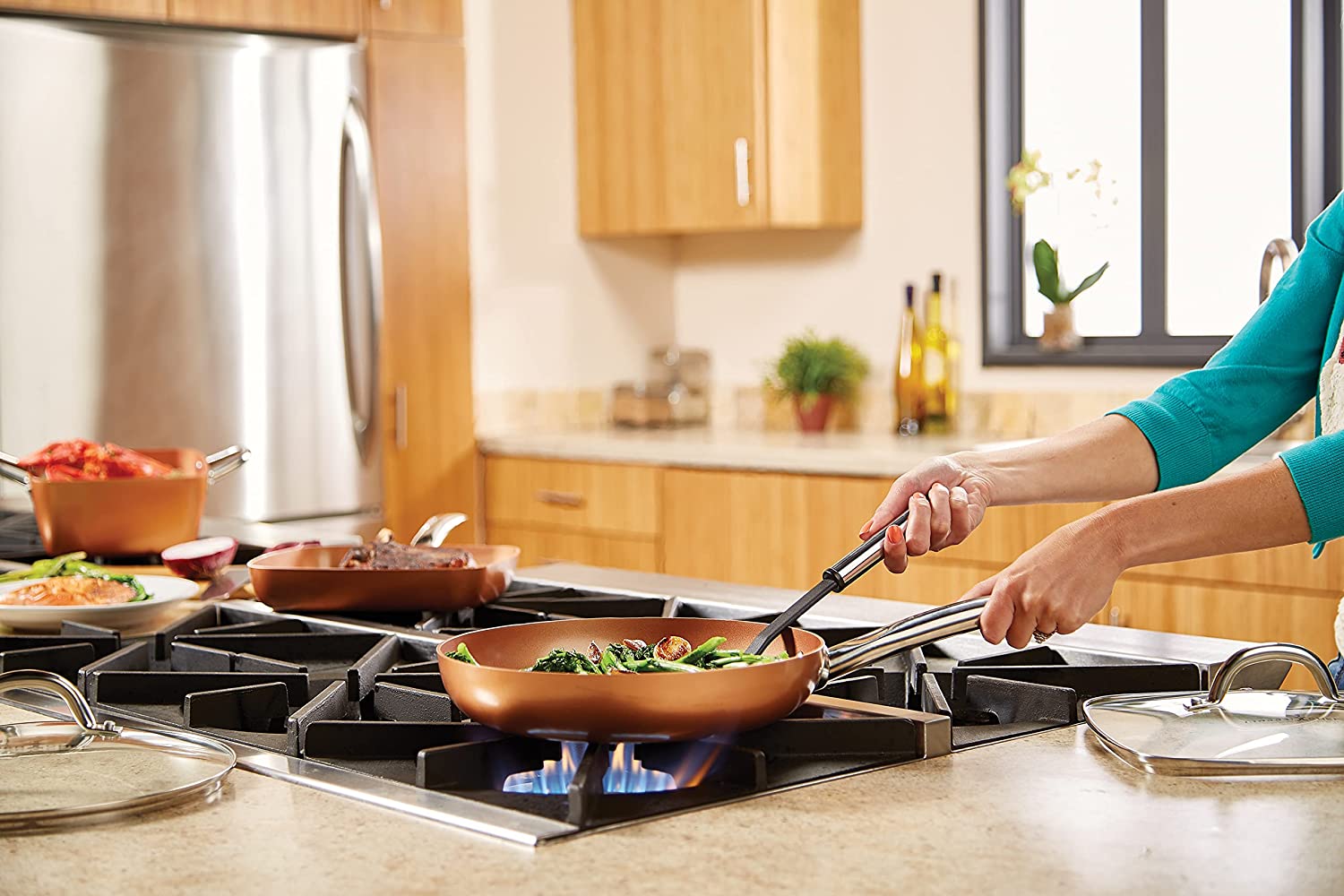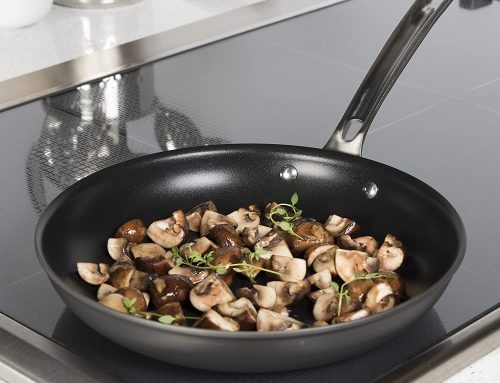Carcinogenic Teflon? Here are ten alternatives to common non-stick pans that feature a Teflon coating.
As we all already know, common non-stick pan and pot have Teflon coating, a material that is increasingly being accused of its potential harmfulness to our health.
What makes the Teflon coating on frying pans potentially dangerous is its PFOA (perfluorooctanoic acid ) content. It is an emulsifier used precisely in the production of Teflon, in relation to which some manufacturing companies claim that it can disappear during the manufacturing process of the non-stick coating, due to the high temperatures that can be reached during the same.
Some studies carried out in the United States at the University of Exeter and published in the pages of the scientific journal Environmental Health Perspectives cast doubt on similar statements, on the basis of which it was demonstrated that high levels of this substance in the blood can be able to favor pathologies involving the thyroid, with particular reference to women.
PFOA was declared in 2006 by the US Environmental Protection Agency as a potentially carcinogenic component, present, even if at low levels, in almost the entire US population as a residue in the blood. Its industrial use could be banned as of 2015, at least in the United States. At high temperatures, Teflon would not only generate PFOA, but also another substance considered carcinogenic (in mice), tetrafluoroethylene.
So which pots and pans do you prefer to protect yourself from any health risks? To cook in an ecological and healthy way, don’t forget to consult our guide on the subject. Finally, here are some tips on choosing alternative pots and pans to use in the kitchen.
1) Titanium

Titanium is a naturally non-stick material. Pots and pans made with its use, therefore, do not need any Teflon coating. It is a hard, resistant material that can be used safely even if you approach the pots or pans with the blade of a kitchen knife. This aspect makes titanium pots and pans practically indestructible and particularly long-lasting. Not having to replace them after a few years will guarantee a certain economic saving, even in the face of an initial cost that could appear high.
2) Vitrified terracotta

Terracotta pots have the ability to ensure uniform cooking at a constant temperature for any type of food, keeping the flavors intact and also allowing you to reduce the use of fats. These are resistant pans that allow food to be cooked at temperatures that are not excessively high and that are able to offer complete non-stick properties, especially if moistened with water before proceeding with cooking. To make targeted and safe purchases it would be good to turn to producers who guarantee their eco-compatibility and who do not use foreign substances in their manufacture. The safest earthenware has undergone a vitrification process and does not contain heavy metals or toxic substances.
3) Non-toxic ceramic

The typical Teflon coating on frying pans has been replaced in recent years by a ceramic coating, often advertised as environmentally friendly and healthy. When purchasing frying pans with ceramic coating, however, it will be necessary to pay some attention, as polluting substances or non-toxic enamels may be used in their production. For this reason, it would be better to make purchases with companies that guarantee the eco-compatibility and wholesomeness of the materials used.
4) Vetro Pyrex

They are considered the safest pans from the point of view of health and are frequently recommended for those suffering from nickel allergies or for those who want to prevent the dishes used in the kitchen from containing heavy metals, such as chromium and cobalt. Unfortunately, these are pots not suitable for cooking on stoves, but to be used exclusively in the oven.
5) Ferro

Iron pots and pans are naturally non-stick and may be able to withstand the highest temperatures. Unfortunately, they have the drawback of being subject to rust if washed with water. Their cleansing should take place using a slightly moistened cloth. immediately afterward the iron pots or pans must be perfectly dried before being removed.
6) Soapstone

With soapstone, pots are made suitable for the slow cooking of food and are able to heat up while maintaining a constant temperature. The non-stick ability of soapstone is natural. Furthermore, it does not release toxic substances of any kind. Soapstone pots require a certain amount of heating time to reach the ideal cooking temperature and are particularly suitable for cooking stews and soups.
7) Stainless steel

Stainless steel is a particularly resistant material, suitable for almost any type of cooking, paying attention to mixing food frequently and adding a small amount of water and oil when cooking vegetables for preparing stews so that they do not risk sticking to the bottom.
8) Aluminum

Are aluminum pots and pans without Teflon coating really safe? The doubts of the scientific world regarding aluminum are increasingly frequent, the residues of which in food could prove to be harmful to our nervous system. Contact between aluminum and acidic or salt-rich substances could be particularly harmful. So be careful also with aluminum containers or films used for food storage. The aluminum salts released during cooking could be potentially toxic to health. Those who have so far used aluminum pots and pans in an attempt to avoid Teflon may have unknowingly run into health risks. It would be advisable to replace your aluminum crockery with stainless steel pots and pans, even better if with a thick bottom, for better cooking and which prevents food from sticking to the bottom.
9) Tinned copper

Copper pots are suitable for any type of cooking as long as they also contain a part of tin. You will therefore have to go in search of tinned copper pans that prevent an oxidation process from occurring during cooking which can lead to the formation of toxic substances and a patina of copper oxide which must always be removed if pans are used. untinned copper. Copper pans, even if protected by a tin coating, should always be used with the utmost care, as this protective coating could easily be damaged by excessive heat or splintered in contact with some kitchen utensils.
10) Enamelled cast iron

Cast iron cookware can be considered safe if coated with a toxic-free enamel layer. It will be the manufacturers who will have to provide guarantees to their customers regarding such a fundamental aspect. Enameled cast iron pots, casseroles, and saucepans can be used for cooking in the oven, on a gas stove, induction hob, and even on the barbecue, as well as being able to be stored without problems in the refrigerator.








